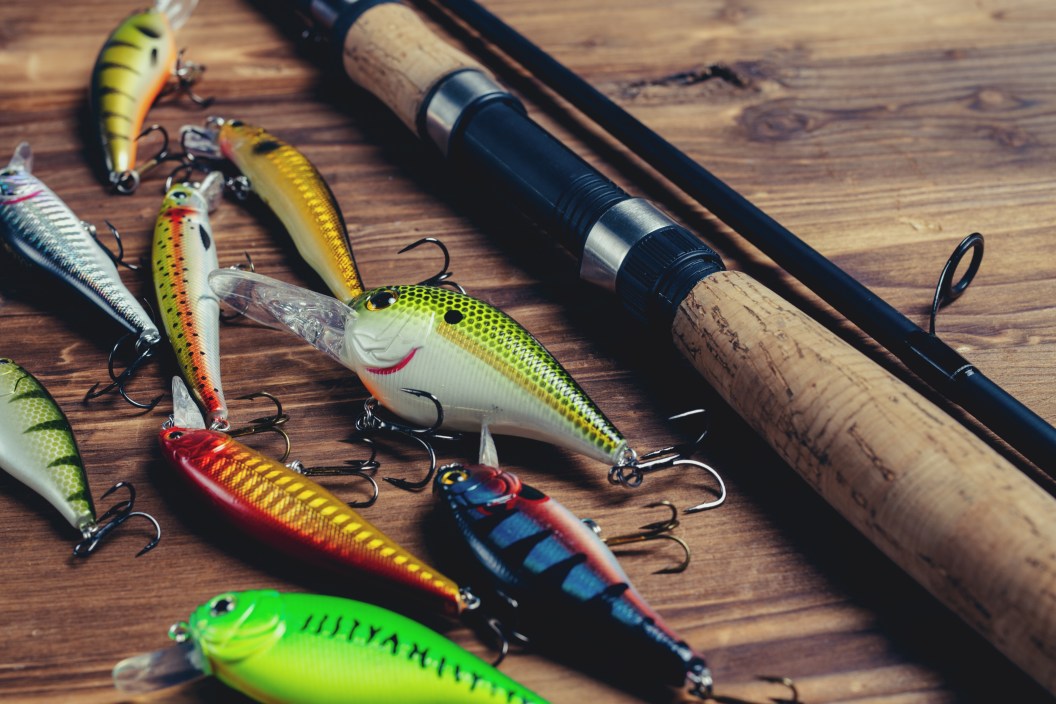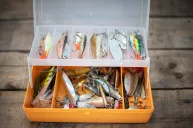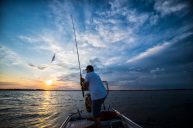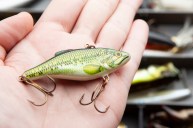Topwater fishing for any species—freshwater or saltwater—is probably the No. 1 most fun way to fish. It's hard to deny the thrill of watching a fish come right out of the water after a lure.
While your go-to when considering surface fishing is probably fish such as bass, pike, muskellunge, and trout, other species including tuna, jacks, mackerel, and billfish (just to name a few) are among the most sought-after saltwater species when it comes to topwater baits.
I've been fishing since I was a young man, and I'll tie on a topwater bait before I reach for anything else in my tackle box, depending on the weather, time of day, and the amount of sunshine.
I've used nearly every single one of these choices at one time or another, so I can attest to how well they work. I can also tell you firsthand that they work on a calm surface, in choppy conditions, and sometimes in 10 feet of water.
Best Overall Topwater Hard Baits

Oleg Petrjakov/Getty Images
There are wake baits, prop baits, walking baits, twitch baits, poppers, and chuggers—only fishermen could make up these names—but one thing is for sure: When both fresh and saltwater fish are feeding on the surface, these are what you want tied onto your line.
Bass Pro XPS
Bass Pro has been making its own line of lures for many years and with so much success that it just keeps releasing new ones. The Bass Pro XPS comes in multiple sizes and colors, works well in every condition, and is incredibly lifelike for attracting fish such as large and smallmouth bass, northern pike, redfish, and striped bass.
Bagley Balsa BangOLure Propbait
My personal favorite for largemouth bass fishing is the black back/gold foil version of this prop bait, as the gold foil sides and the orange belly really show up on top of the water. The Bagley Balsa BangOLure Propbait hooks bass so well that I sometimes flatten the barbs on the back hooks because fish tend to get hooked around their sides as well as their mouths.
Deps Buzzjet Wakebait
The Deps Buzzjet Wakebait really attracts bass, pike, and redfish on the surface, especially actively feeding fish. It's easy to use and has multiple rattles to get attention; and with so many color patterns to choose from, you'll have a hard time making room for them all in your tackle box.
Rapala Skitter Prop
No list of great topwater baits would be complete without an offering from the Rapala company. The Rapala Skitter Prop has balsa wood construction and an incredibly lifelike design that mimics virtually every kind of baitfish, continually making it a top choice of anglers everywhere, freshwater or saltwater.
Strike King Saltwater Sexy Dawg Hard Knock
Every good tackle company has a streamlined, easily castable hard-bait surface lure that makes fish ridiculously aggressive. The Strike King Saltwater Sexy Dawg Hard Knock is filled with rattles to help fish find it, comes in an array of colors, and is armed with razor-sharp hooks to grab fish and hold on.
Best Overall Buzzbaits
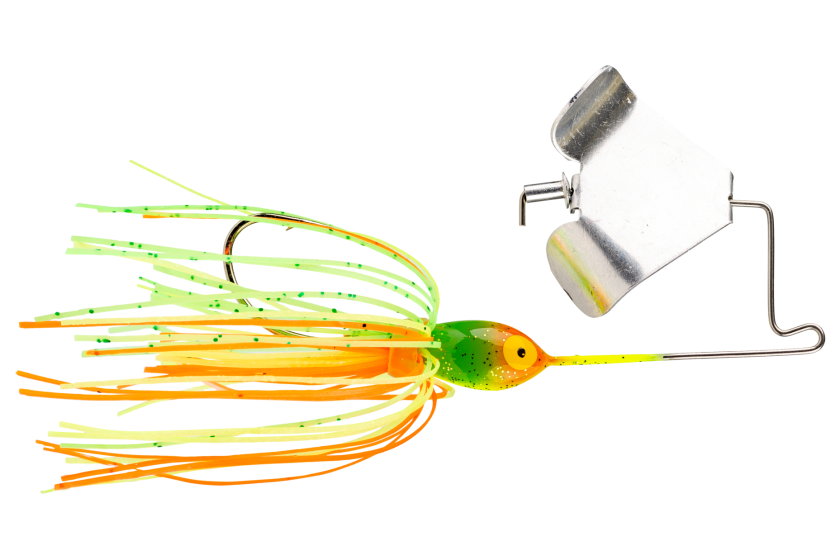
Strike King
You haven't lived until you've casted a good buzzbait where big fish are hiding, such as weed edges, sunken timber, around docks, and even in open water. Buzzbaits come in different sizes, colors, and styles, but they all do one thing the same: Entice big fish into their base aggressive-feeding tendencies.
Booyah Pond Magic
You've got to have a sharp hook, multiple color patterns, and a blade that works every time, and the Booyah Pond Magic provides all of these functions. The Mustad Ultra-Point hook is as sharp as it gets, which you will find out on the first hook set.
War Eagle
The custom, American-made topwater baits from War Eagle are a favorite due to the fact that they hit the water running and stay running. The proprietary hook grabs bass by the lips and keeps holding even when they start leaping out of the water.
Strike King Double Take
Sometimes, it seems as if the only thing better than a regular buzzbait is a double-bladed version when topwater fishing in open water, as it can stick out even more to a resident like a big largemouth bass. The Strike King Double Take is great in areas where there's plenty of activity and fish like big bucketmouths or even northern pike need an extra incentive to strike.
Best Tried-and-True Topwater Baits

LightFieldStudios/Getty Images
There are many good reasons why a lure continues to be mass-produced and sells like hotcakes: It worked then, and it still works to catch fish. There have been many imitations, but when it comes down to spending our hard-earned money on fishing gear, we prefer to go with something that we trust time and time again.
Heddon Zara Spook
Introduced around 1939, the Heddon Zara Spook was the first of the Heddon company's best-selling lures. The Zara's legendary walk-the-dog action has been catching more largemouth bass than any other of its imitations since that time.
Fred Arbogast Jitterbug and Hula Popper
The Fred Arbogast Jitterbug and Hula Popper lures were also designed and released before WWII and have been catching bass ever since. First made of wood, they were originally hand painted to create one of fishing history's most iconic lures. Today's plastic version retains the look but is much more durable.
Best Topwater Baits for Bass Fishing: Topwater Frogs

Mustad Fishing
When it comes to bass fishing, there might not be a system more looked forward to than using a topwater frog. They can be thrown into the middle of a mess of weeds, over open water, or into a brush pile—but regardless, you're going to have to be patient and hang on.
Booyah Pad Crasher
Between the range of colors and the consistent hook-ups, the Booyah Pad Crasher reliably catches bass and other species in cover that you can't reach with other baits such as hard baits and buzzbaits.
6th Sense Vega Hollow Body Frog
The brand 6th Sense has been coming into its own for some time now, and the results speak for themselves. The lifelike, slender shape and 3D eyes of the 6th Sense Vega Hollow Body Frog really attract the attention of gamefish, and it holds on long after the hook-up.
LiveTarget Frog Popper
With a smaller profile that can really reach into backwater pockets and ultra-sharp hooks that really dig in, the LiveTarget Frog Popper is easy to use and produces instant hook sets.
What You Need to Know About Choosing Topwater Baits
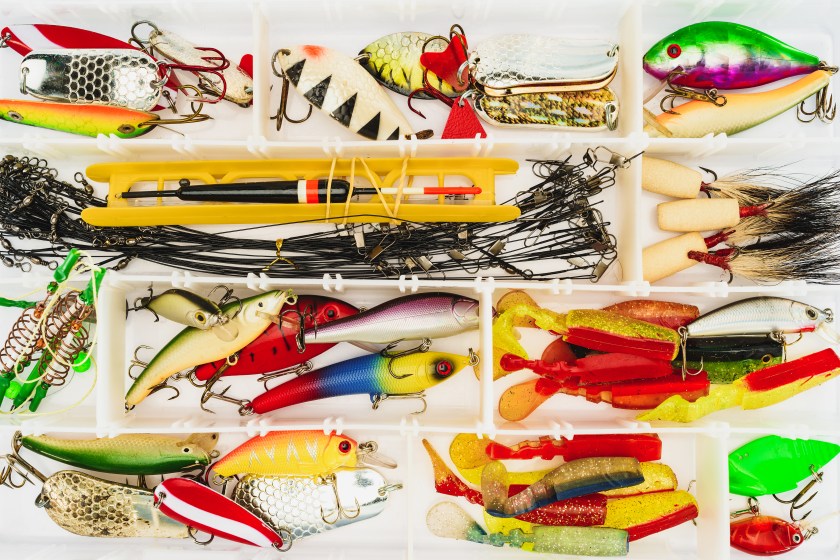
Getty Images, LightFieldStudios
As topwater fishing has evolved, more and more lures have been joining this category. Each is fished a little differently, and the first thing to understand is the major types of topwater baits.
Topwater baits will work for much of the year if the fish, especially bass, feed near the surface—typically anytime the water is 60 degrees or warmer. During the summer, the first light and right before it gets dark will be some of the best times to do it, but fish will hit a topwater lure in other conditions. Low-light conditions are always good, whether due to the time of day or cloud cover, but fish (again, especially bass) will hit them even in the bright sunshine.
Wake baits: Because they are fished slower, they are not the best for covering large areas. They do best with a slow, methodical retrieve that imitates bluegill or other small baitfish. Many fish strikes will occur as the lure comes to a stop or immediately after you begin working the lure again after a pause.
Prop baits: Prop baits have a propeller on the nose of the bait and the rear of the bait, and often only on the rear. Generally speaking, it is used in open water near weed edges, around docks, and by bridge pilings. You cast it, start the retrieve, and then let it rest for a bit to see if anything has taken notice. Prop baits can really get the attention of both fresh and saltwater fish by the bubbles they create that mimic a dying baitfish.
Walking baits: One of the best types of topwater baits is a walking bait. There are many sizes and colors offered from the various brands; and although they look a little different, the action from these baits is very similar. Often referred to generically as a "spook" for the Heddon Zara Spook that popularized this type of lure, each is relatively similar—a pencil- or cigar-shaped bait that "walks" side-to-side on the surface with each rod twitch.
Learning to walk a lure—or "walk the dog," as it's often called—takes a little work to get the right cadence. Short twitches of your rod will make the bait move to one side and then to the other with the next twitch. This action imitates a wounded baitfish struggling on the surface and draws bass to the lure.
One component to fishing them effectively is getting into a rhythm with the right speed—some days, the bass want something moving quickly, and sometimes a slower action is better. Experiment with different speeds and see what the bass want that day.
Twitch baits: Twitch baits lack the traditional bill of other hard baits and produce a smoother and quieter overall presentation than other topwater offerings. This makes twitch baits an excellent choice in clear water where fish like bass can become easily spooked, or when you want a stealthier bait overall.
Poppers: Featuring a cupped face and a small baitfish profile, poppers "pop" and create a bubble trail as they work along the surface. They're a target-oriented bait that draws fish from shallow cover such as submerged trees and grass, and those hanging around docks.
Chuggers: Chug-action lures such as the Jitterbug or the Heddon Crazy Crawler are adorned with a type of lip in the front that makes them push the water out ahead of it, creating an action that is both unique and appealing to largemouth bass, pike, and muskie.
They are fished slowly through open water on the surface, while pausing at times to rest and mimic a wounded baitfish or other creature that looks like easy prey.
Buzzbaits: A buzzbait has a skirt just like a spinnerbait with a blade that rotates and buzzes along the surface during the retrieve. These excel in shallow water and get some of the most ferocious bites from big bass that you'll ever experience.
Ploppers: One of the newest topwater styles, ploppers look like most walking baits but have a tail section that rotates and "plops" the water as it is retrieved. These are great for largemouth bass and pike, and really get the attention of muskellunge.
Toads and frogs: The toad is a soft plastic, and the tails kick and bubble along the surface when retrieved. Frogs feature a smooth plastic body that can be fished just about anywhere because they are incredibly weedless.
Buzzbaits, ploppers, and toads can be fished with a simple cast and retrieve. Ploppers float, so you can fish them as fast or slow as you'd like, but buzzbaits and toads require a bit more attention. These two baits will sink if you let them, so the trick is to retrieve them just fast enough so they stay on the surface.
Frogs are a different animal and fished more like a walking bait with a sashay on the surface. They're great because they can be fished anywhere, even on matted vegetation and lily pads. But don't think you have to have a canopy to catch fish with them; they work great in open water or when fished around docks and other objects. There are also popping frogs, which share many of the same features as a popper, but have the added benefit of being weedless.
Your Questions, Answered
Because topwater baits float, line selection becomes critical to get the best performance from your lures. Fluorocarbon lines have become extremely popular but are not a good choice for topwaters. Because this line type will sink, it can pull the baits down and affect the action.
Instead, a monofilament or braided line will be a better choice because both line types float. Monofilament has been a standard for years and works well for all topwaters except frogs and toads, which are often fished around thick grass and need a stronger line. Braided line is a better choice for these lures but can also be used for the other topwater baits.
For rods and reels, a variety of different setups will work. Generally, a rod should have softness in the tip to get the bait to work correctly. Having too stiff of a rod will make it harder to get the bait moving effectively; but if you use a rod that's too flimsy, you lack power. A standard, medium-heavy baitcast rod should be the right balance for all of these topwaters, except frogs, which are often fished on heavier gear because of the thick grass where they often are used.
A good, all-around reel speed would be something around 7.1:1; it's fast enough to get the bait back in quickly if needed but slow enough that you are not overworking the bait.
One of the biggest complaints about topwater fishing is the hook-up ratio. Bass and other species like redfish and stripers often crash at the commotion and, sometimes, they miss the bait and you don't hook them. That's one of the factors, but there's also the angler error component of setting the hook too quickly.
A topwater blowup is exciting, and many anglers pull the bait away from fish if they set too fast. Instead, try to wait until you feel the fish with your rod before setting. It's a tricky balance of setting too quickly or waiting too long, but timing is everything. Usually, a two-count after the initial explosion will be enough time to ensure the fish has the bait.
Who We Are
Craig Raleigh has been fishing for over 50 years, everywhere from the Merritt Dam in Cherry County, Nebraska, to the Cumberland River in Nashville, Tennessee, to his home in New York state. He knows firsthand the difference a good bait or lure can make in a day on the water, and he has used nearly every topwater bait on this list at one time or another.
